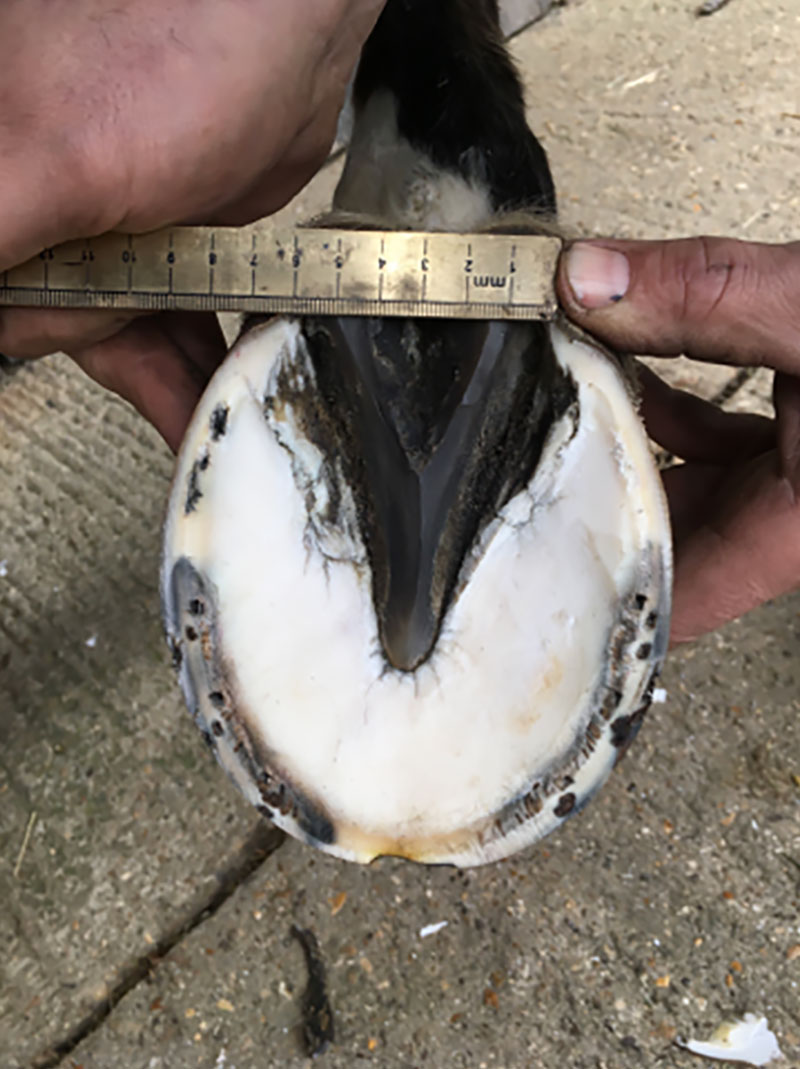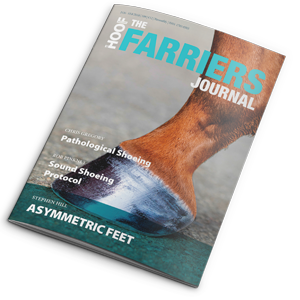
In uneven front feet-which foot/leg is more prone to injuries of the superficial digital flexor tendon?
Read about FWCF Stephen Hill’s research on asymmetric feet.
Asymmetric feet
The Relationship Between Superficial Digital Flexor Tendon Lesions and Asymmetric Feet in Equine Forelimbs
Anecdotally for many years, horse owners and veterinary surgeons have tried to influence the trimming and shoeing techniques, undertaken by farriers to reduce the length of toe in the belief that this reduces the pressure on the flexor tendons of the forelimb and reduces the chance of sustaining tendon injury. However, the term “long toe” is inconsistently defined. Horses that have large flat feet are often considered to have long toes. A horse with a lesser angle of dorsal hoof wall (DHW) is often described as having a long toe, however, exactly the same length toe may be described as short or normal simply due to a greater angle of DHW.
Stashak (2008) has stated that excessive pastern slope, improper shoeing (short shoeing, shoeing with long toe/low heel, a low hoof angle, toe grabs or club feet) are predisposing causes of tendon injury. Historically, it has been reported that toes that are described as being too long must always increase the strain on the back tendons during locomotion (Mattinson 1922). For every centimeter of toe length in an average Thoroughbred results in 50 kilograms of force acting on the tendons (Weller 2016). However, in cases where the horse has asymmetric feet, foot size and DHW angle appear to be more significant factors affecting tendon injury. Asymmetric feet are common in lots of horses and do not always mean a horse has a club foot. Asymmetric feet are defined as pairs of opposing feet that are not similar in appearance; one foot appears larger than the other with the smaller foot often being boxier in shape, with the appearance of being more upright. Personal experience shows that horses with SDFT lesions most commonly have the injury to the limb with the smaller more upright foot. Research has shown that the smaller foot is more vulnerable, indicating that horses are less likely to suffer catastrophic musculoskeletal injury (CMI) in the foot with a greater solar surface area (Kane 1998).
Conclusion
The conclusions drawn from this study are:
- The historical opinion that tendon injuries in the horse’s forelimb are associated with long toes is incorrect when relating to the injury to the SDFT. The SDFT is reported to be the tendon involved in over 90% of tendon injuries.
- Modern shoeing techniques are undertaken in the belief that reducing the toe length or by moving the breakover point back, reduces the chance of injury to the flexor tendons, this may aid in the prevention of DDFT injuries, but can also exacerbate the chance of injury occurring in the SDFT. Where horses have asymmetric feet, the limb with the smaller foot is more likely to sustain a SDFT injury.
- Horses with larger difference in hoof size within pairs of feet are more susceptible to tendon injury.
- Conformation for soundness is often overlooked with fashionable exaggerated movement taking priority in the breeder’s mind. This comes at a cost as asymmetry in horse’s feet and limbs are proven to reduce a horse’s working life. Conformation is a major factor to the cause of SDFT injuries; more attention is needed when breeding horses. This study highlights the need for further research in this area.

